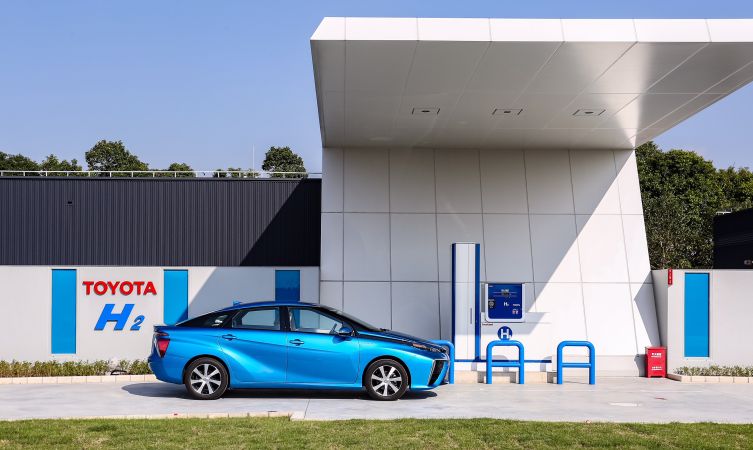Toyota To Expand Mass Production Of Fuel Cell Stacks, Hydrogen Tanks

Toyota sees global sales of fuel cell electric vehicles increasing significantly after 2020, to at least 30,000 per year from today's 3,000. To prepare for this growth, the company unveiled plans for two major new facilities today: a brand-new building near its original automobile factory for expanding fuel cell stack mass production, and a new line in an existing plant to manufacture high-pressure hydrogen tanks.
The FC stack is what generates the on-board electricity from hydrogen and oxygen which propel FCEVs with zero emissions, and the tanks store the hydrogen fuel. Manufacturing both components at scale is critical to achieving lower system costs and wider availability for further growth and sales of FCEVs.
To increase FC stack output, Toyota will move production from its current location, within one of the existing buildings at its Honsha Plant in Toyota City, to a brand-new, eight-floor high-tech facility on the same premises, near the original site of the company's very first automobile factory in 1938. The production of high-pressure hydrogen tanks will be handled by a new, dedicated line to be added inside the nearby Shimoyama Plant in Miyoshi City. Previously, the hydrogen tanks were assembled at the Honsha plant on a smaller scale.
Construction of the new hydrogen tank line at Shimoyama is starting now, while the exterior for the new stack production facility is already finished and work will now begin on the interior. Details of the respective facilities will be announced later with a view to start operations around 2020.
However, in order to encourage more widespread use of hydrogen-powered zero-emission vehicles, popularization needs to start by the 2020s. Toyota aims for annual sales of FCEVs to top 30,000 units globally from around that time. At present, Mirai is sold in eleven countries: Japan, the United States, and nine countries in Europe.
Toyota is working to develop an environment that will allow FCEVs to be sold in more countries and regions in the future. As part of this, demonstration tests of Mirai are currently under way in Australia, Canada, China, and the U.A.E., and Toyota is examining demand for FCEVs while continuing to help with initiatives to promote hydrogen infrastructure development. In the Japanese market, Toyota aims to reach sales of at least 1,000 FCEV units per month and over 10,000 units annually, from around 2020.
Disclaimer: TheFly's news is intended for informational purposes only and does not claim to be actionable for investment decisions. Read more at TheFly.com.




The problem with hydrogen is it must compete against electric which was heavily subsidized to encourage a build out of charging stations. The main problem wit hydrogen now is less convenient due to limited charging stations, not the technology itself.
Yes. The chicken and egg problem. Without enough stations, it makes buying a car less attractive. But without enough cars sold, it's hard to justify more charging stations.